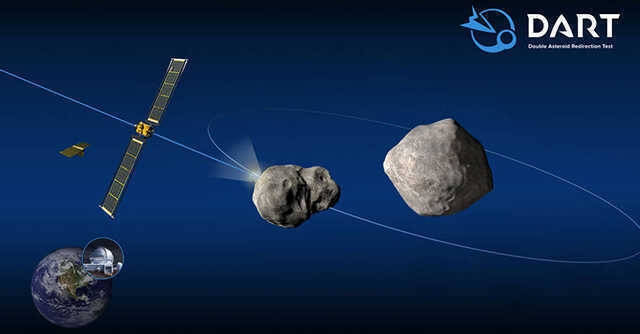
NASA’s asteroid-deflecting DART mission launches aboard SpaceX Falcon 9


US space agency NASA has successfully launched its first of a kind planetary defence mission, the Double Asteroid Redirection Test (DART) probe, aboard a SpaceX Falcon 9 rocket. The launch took place successfully at 11:52AM IST. At the time of writing, the first stage booster of the Falcon 9 rocket has successfully landed back on Earth, landing mid-sea on SpaceX’s famous ‘Of Course I Still Love You’ drone ship.
DART is the first of its kind space mission by NASA, where the DART probe will be deliberately crashed into an asteroid. The idea behind the mission is to create a range of planetary defence instruments that can protect Earth when a space object threatens to approach our planet – with dire circumstances.
The DART probe has successfully launched atop the SpaceX Falcon 9 rocket today, and will soon be put in trajectory to approach the asteroid Didymos, and its ‘moonlet’, Dimorphos. The binary asteroid poses no imminent threat to Earth, but are classified under NASA’s nomenclature of Near Earth Objects (NEOs).

NEOs are typically asteroids that are larger than 460 feet in diameter, and approach Earth within a boundary of 48 million kilometres. The Didymos binary asteroid itself is about 2,500 feet in diameter, with its moonlet, Dimorphos, also measuring 525 feet. At their closest approach to Earth, Didymos is expected to be about 11 million kilometres away from Earth, and therefore pose no real threat to our planet.
It is at its closest approach to Earth that DART aims to meet Didymos. In late 2022, DART will seek to crash into Dimorphos, in an effort to alter its trajectory. According to NASA observations, Dimorphos presently takes 11 hours and 55 minutes to orbit its bigger asteroid, Didymos. After the impact in October 2022, the DART research team estimates that this orbiting time will be reduced by about 10 minutes.
DART will crash into Dimorphos at around 24,000 kilometres per hour – roughly 15 times the speed of Earth’s rotation at the equator. If it succeeds in changing the orbital time of Dimorphos, NASA says that it will be a proof of concept for its planetary defence idea in terms of protecting Earth from future killer space rocks.

DART carries a range of instruments to study the circumstances of its impact on Dimorphos. One of its key instruments is the Light Italian CubeSat for Imaging of Asteroids, or LICIACube. The latter is designed by the Italian Space Agency, and will allow scientists back on Earth to observe what happens after DART crashes into the asteroids.
